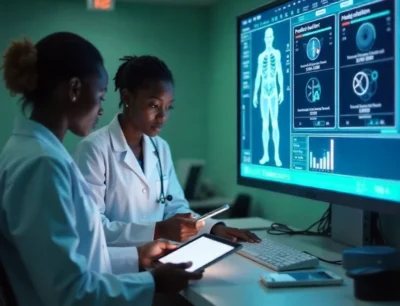AI Meets 5G: The Digital Power Duo Transforming Patient Care
AI and 5G are revolutionizing healthcare—enabling real-time care, smarter diagnostics, and connected systems that put
Notice: Test mode is enabled. While in test mode no live donations are processed.

AI and 5G are revolutionizing healthcare—enabling real-time care, smarter diagnostics, and connected systems that put

Admin AI is going mainstream. In Q3 2025, it shifted from pilot to priority—and by 2026, it will be a standard budget

AI is reshaping healthcare navigation — turning predictions into real actions that improve outcomes for patients, prov
